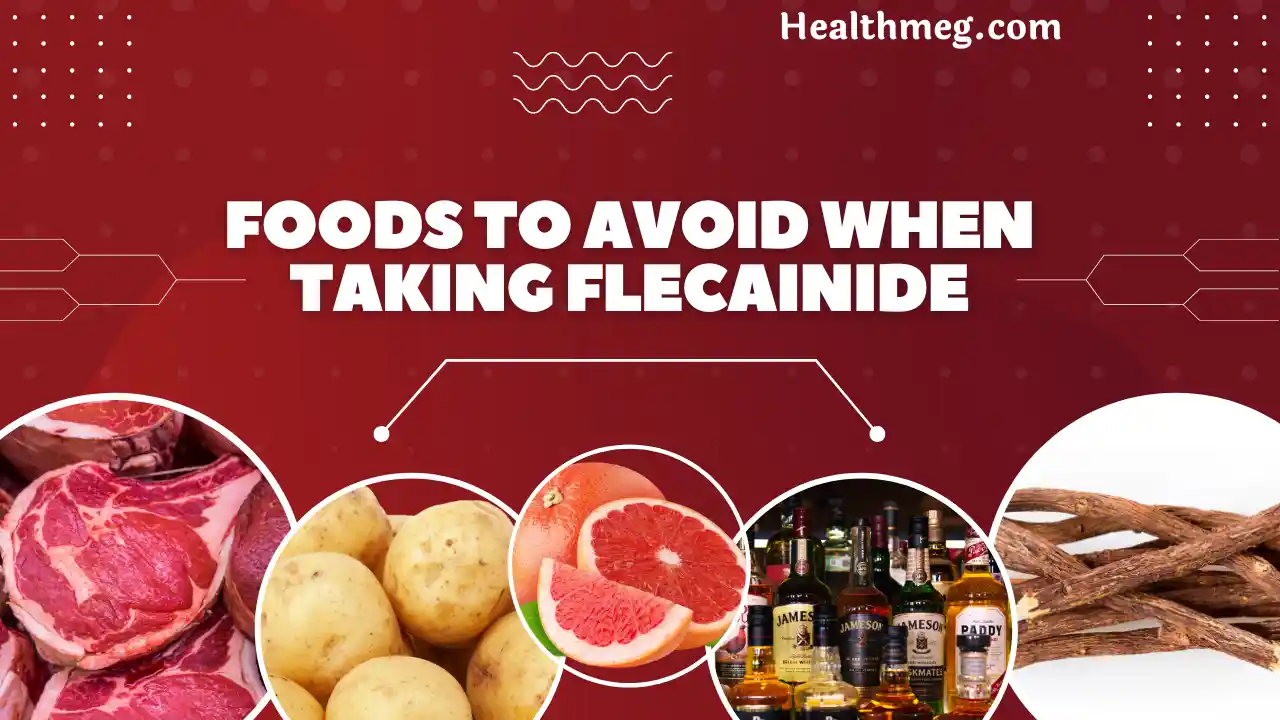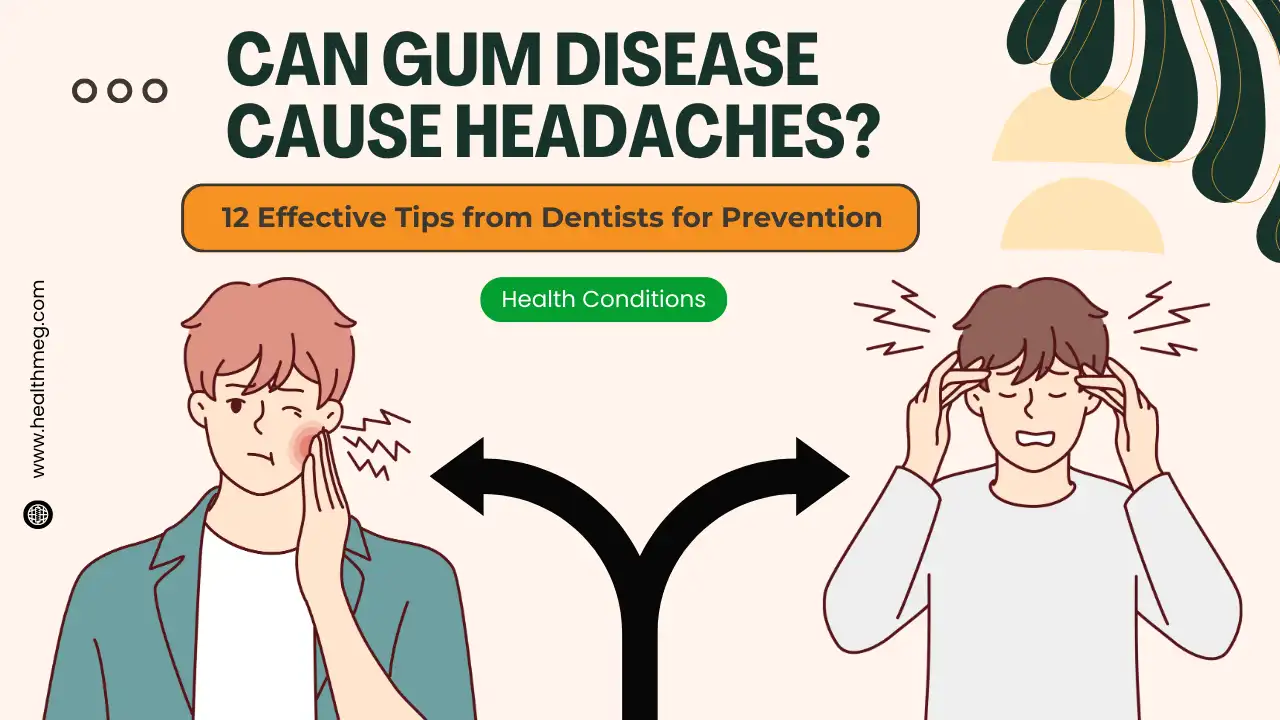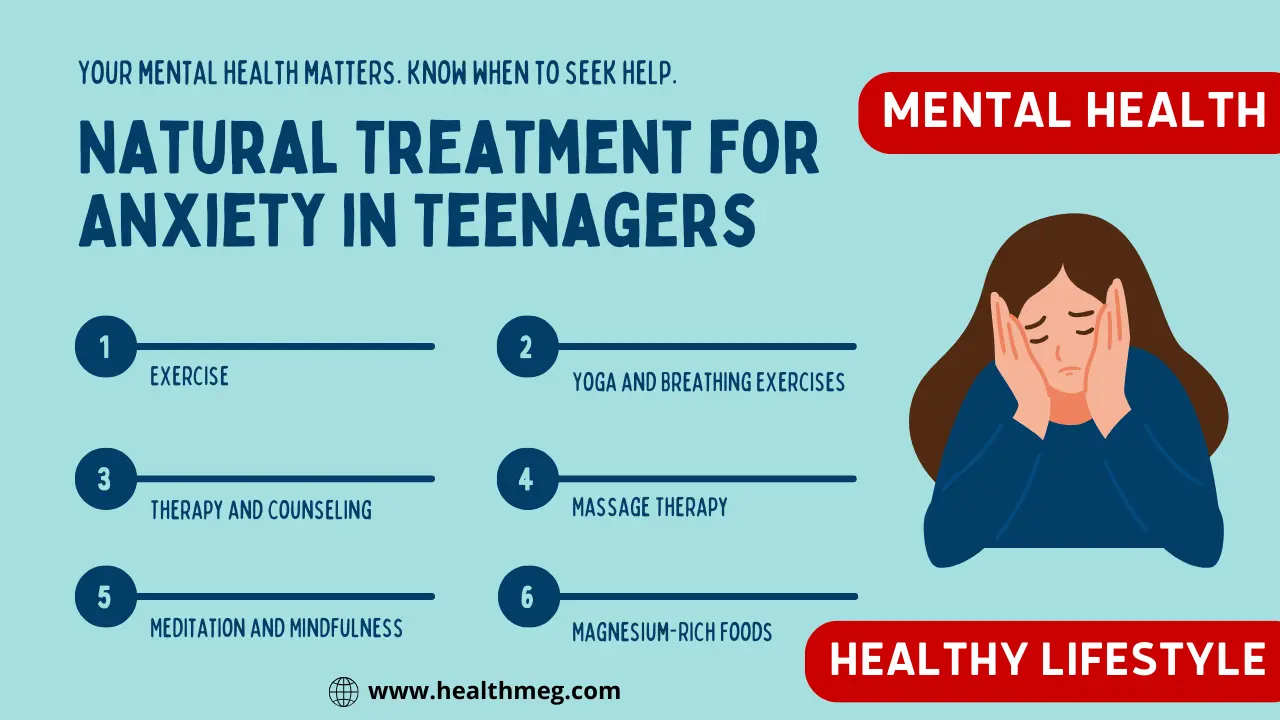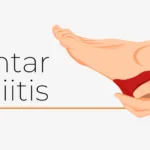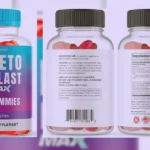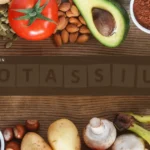Have you ever felt your heart acting weird like it’s jumping or going too fast? If so, you might know about a medicine called Flecainide. Doctors give this medicine to people whose hearts don’t beat in a regular rhythm, which is called an irregular heartbeat.
This article is for people who take Flecainide and want to know Which Foods To Avoid When Taking Flecainide to keep their heart healthy. It’s important to know how certain foods can affect this medicine. But remember, this article isn’t the same as talking to a doctor. It’s always best to chat with your doctor about any questions or worries you have about your food and medicine. They can give you advice specific to you and your health.
What is Flecainide Used For?
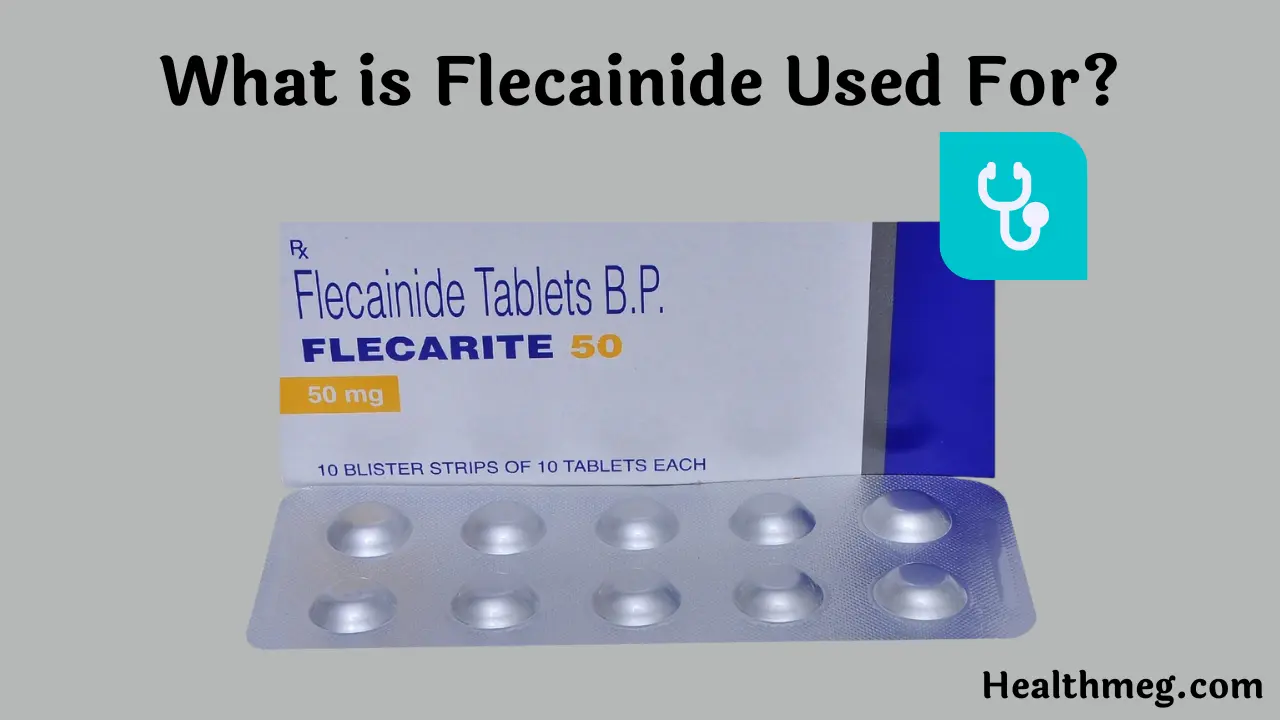
Flecainide is a prescription medicine that doctors give to people who have irregular heartbeats. These irregular heartbeats are also called arrhythmias [irregular heart rhythm].
Think of your heart like a drum. In a healthy heart, the rhythm (or beat) is steady and regular, just like the steady beat of a drum. But sometimes, the heart can beat too fast, too slow, or skip a beat. This is called an arrhythmia.
Flecainide helps to control these irregular heartbeats by keeping the electrical signals in your heart working properly. This helps your heartbeat in a regular rhythm again.
It’s important to remember that Flecainide is not a cure for arrhythmias, but it can help manage them and improve your quality of life.
Possible Side Effects of Flecainide
Like any medication, Flecainide can sometimes cause side effects. It’s important to be aware of these potential effects, but remember that not everyone experiences them.
Common Side Effects:
- Dizziness: This can feel like feeling lightheaded or unsteady on your feet.
- Vision problems: These may include blurry vision, trouble focusing, or seeing spots.
- Headache: This is a common side effect of many medications.
- Nausea: This is feeling like you might throw up.
- Feeling weak or tired: You might feel like you have less energy than usual.
Other Possible and Serious Side Effects:
While less common, other side effects of Flecainide can be more serious. If you experience any of the following, it’s important to talk to your doctor right away:
- Fast or irregular heartbeat: This can feel like your heart is racing or skipping beats.
- Chest pain: This can be a sign of a serious problem and should not be ignored.
- Shortness of breath: This can feel like you’re having trouble catching your breath.
- Swelling in your hands, feet, or ankles: This can be a sign of fluid buildup in your body.
- Sudden weight gain: This can be a sign of fluid buildup or other problems.
It’s important to remember that this is not a complete list of all possible side effects. If you have any questions or concerns about side effects, be sure to talk to your doctor.
Foods to Avoid When Taking Flecainide
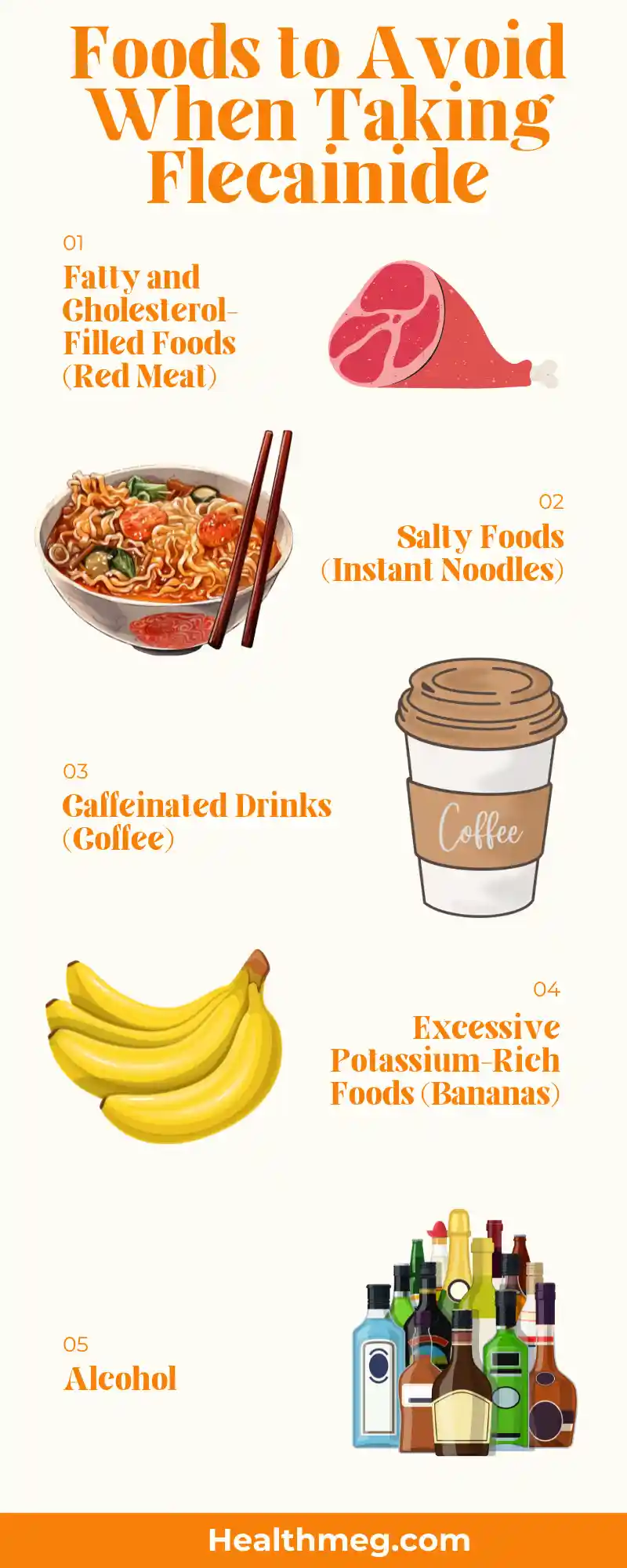
Taking care of your heart health goes beyond just medication. What you eat plays a crucial role in keeping your heart strong and healthy.
While Flecainide helps regulate your heart rhythm, certain foods can interact with the medication or put additional strain on your heart. Let’s explore some foods to limit when taking Flecainide:
1. Fatty and Cholesterol-Filled Foods
Think of your heart as a complex machine. To function smoothly, it needs the right fuel. Saturated fat and cholesterol are like “greasy oil” for your heart.
Consuming too much can clog your arteries, making it harder for blood to flow freely. This can lead to various heart problems, including arrhythmias.
Here are some examples of foods high in saturated fat and cholesterol:
- Red meat: Fatty cuts of beef, pork, and lamb.
- Processed meats: Hot dogs, sausages, bacon, and deli meats.
- Full-fat dairy products: Whole milk, full-fat cheese, and butter.
opt for healthier alternatives such as:
- Lean protein sources: Chicken, fish, beans, lentils, and tofu.
- Fish: Fatty fish like salmon and tuna are rich in omega-3 fatty acids, which are beneficial for heart health.
- Low-fat dairy products: Low-fat milk, yoghurt, and cheese.
2. Salty Foods
Sodium, the main ingredient in table salt, is another factor to consider for heart health. Consuming too much salt can increase your blood pressure, putting additional stress on your heart.
The recommended daily sodium intake for individuals with heart conditions is generally less than 2,000 milligrams (mg).
Here are some examples of foods high in sodium:
- Processed foods: Frozen dinners, packaged snacks, instant noodles, and canned soups.
- Canned goods: Canned vegetables, fruits, and meats often contain added sodium for preservation.
- Cured meats: Ham, salami, and bacon are packed with sodium to enhance flavour and preserve them.
Focus on low-sodium alternatives like:
- Fresh fruits and vegetables: Naturally low in sodium and packed with beneficial nutrients.
- Preparing meals at home: This allows you to control the amount of salt added during cooking.
- Using herbs and spices: These can add flavour to your food without adding sodium.
3. Caffeinated Drinks
While a morning cup of coffee might kickstart your day, it’s essential to be mindful of your caffeine intake, especially when taking Flecainide. Caffeine can potentially interact with the medication and affect your heart rhythm.
Here are some common sources of caffeine:
- Coffee: The most popular source of caffeine, with varying amounts depending on the type and brewing method.
- Tea: Black tea generally contains more caffeine than green tea.
- Soda: Many popular sodas are loaded with caffeine and sugar, both of which can impact heart health.
- Energy drinks: These drinks often contain high amounts of caffeine, sugar, and other stimulants, making them particularly concerning for heart health.
Moderation or alternatives are key. Consider:
- Limiting your caffeine intake: Talk to your doctor about a safe daily limit for you.
- Choosing herbal teas: These offer various flavours and health benefits without caffeine content.
- Opting for decaffeinated beverages: These are readily available for coffee, tea, and even some sodas.
4. Excessive Potassium-Rich Foods
Potassium is an essential mineral for various bodily functions, including maintaining a healthy heart rhythm. However, excessive potassium intake can potentially interact with Flecainide and cause problems.
Some fruits and vegetables are naturally high in potassium, including:
- Bananas: A medium banana contains around 422mg of potassium.
- Potatoes: A medium baked potato with skin contains around 620mg of potassium.
- Spinach: One cup of cooked spinach packs about 708mg of potassium.
Here is the list of Top 40+ Foods Rich in Potassium List.
While these foods are generally healthy, it’s crucial to consult your doctor for specific guidance on potassium intake when taking Flecainide. They can assess your individual needs and recommend appropriate dietary modifications.
5. Citrus Fruits
Grapefruit, a popular citrus fruit, can interact with Flecainide. The fruit contains a compound called furanocoumarins which can interfere with the body’s ability to break down and eliminate the medication.
This can lead to increased levels of Flecainide in your blood, potentially increasing the risk of side effects.
It’s important to consult your doctor regarding grapefruit consumption while taking Flecainide. Depending on your individual health and medication dosage, they may advise you to completely avoid grapefruit or recommend a safe waiting period after consuming it before taking your medication.
6. Alcohol
Alcohol, a common beverage, can have negative effects on your heart health. It can weaken your heart muscle and contribute to irregular heartbeats, further complicating existing arrhythmias.
Therefore, it’s generally recommended to limit or avoid alcohol while taking Flecainide. This will help minimize the potential for worsening your heart rhythm problems.
7. Licorice
Licorice, a sweet flavouring found in candies and teas, can potentially interact with Flecainide. It contains a compound called glycyrrhizin which can increase blood pressure. This can be particularly concerning for individuals with heart conditions.
To ensure your safety, it’s crucial to avoid liquorice in all forms while taking Flecainide. This includes candies, teas, and even supplements containing liquorice extract.
8. Foods High in Tyramine
Tyramine is an amino acid naturally found in certain foods. While generally safe for most people, it can interact with some medications, including Flecainide, potentially causing a sudden spike in blood pressure.
Here are some examples of foods high in tyramine:
- Aged cheeses: Cheddar, blue cheese, parmesan
- Cured meats: Salami, pepperoni, hot dogs
- Fermented foods: Sauerkraut, kimchi, miso
Food To Take When Taking Flecainide
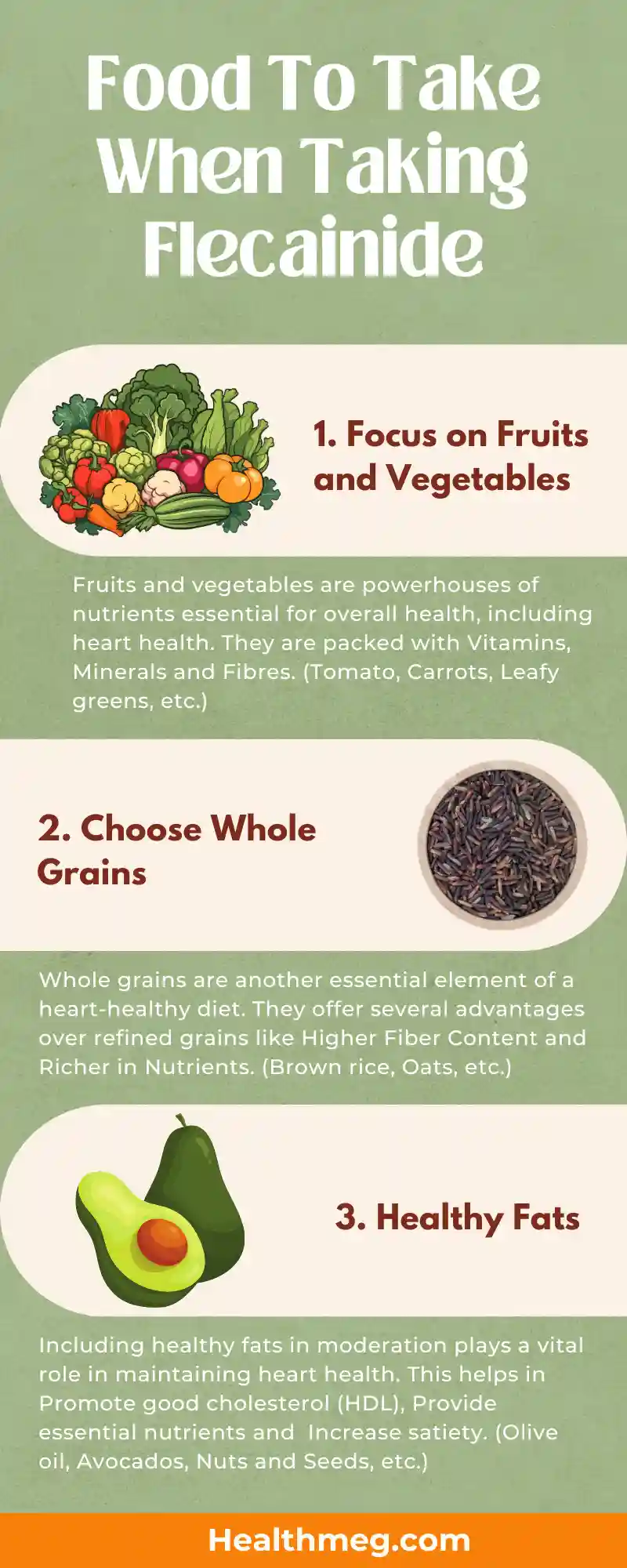
While limiting certain foods is crucial, building a well-rounded, nutritious diet is equally important for supporting your heart health. Here are some key components to focus on:
1. Focus on Fruits and Vegetables
Fruits and vegetables are powerhouses of nutrients essential for overall health, including heart health. They are packed with:
- Vitamins: These play various roles in the body, including maintaining healthy blood pressure and reducing inflammation, both beneficial for the heart.
- Minerals: Minerals like potassium and magnesium are crucial for maintaining proper heart function and regulating blood pressure.
- Fibre: This dietary fibre helps lower bad cholesterol (LDL) levels and promotes gut health, indirectly contributing to heart health.
Embrace a rainbow! Include a variety of colourful fruits and vegetables in your diet:
- Red: Tomatoes, strawberries, watermelon
- Orange and Yellow: Bell peppers, carrots, oranges, mangoes
- Green: Leafy greens (spinach, kale), broccoli, kiwi
- Blue and Purple: Blueberries, eggplant, plums
- White and Brown: Bananas, cauliflower, potatoes (with skin)
2. Choose Whole Grains
Whole grains are another essential element of a heart-healthy diet. They offer several advantages over refined grains:
- Higher Fiber Content: Fiber promotes satiety, helps manage blood sugar levels, and aids in lowering bad cholesterol, all beneficial for heart health.
- Richer in Nutrients: Whole grains retain essential nutrients like B vitamins, iron, and magnesium, often lost during the refining process of white flour.
Swap your refined grains for these whole-grain options:
- Brown rice: A nutritious alternative to white rice, offering more fibre and nutrients.
- Quinoa: A complete protein source packed with fibre and various beneficial minerals.
- Whole-wheat bread: Choose whole-wheat varieties over white bread for added fibre and nutrients.
- Oats: A heart-healthy breakfast option rich in soluble fibre, which helps lower cholesterol.
3. Healthy Fats
Contrary to popular belief, not all fats are bad for you. In fact, including healthy fats in moderation plays a vital role in maintaining heart health. They:
- Promote good cholesterol (HDL): HDL cholesterol helps remove bad cholesterol from the arteries, contributing to a healthy heart.
- Provide essential nutrients: Healthy fats are a source of essential fatty acids vital for various bodily functions, including brain health.
- Increase satiety: Including healthy fats in your diet can help you feel fuller for longer, potentially aiding in weight management.
Here are some excellent sources of healthy fats:
- Olive oil: A versatile oil rich in monounsaturated fats, beneficial for heart health.
- Avocados: A creamy fruit loaded with healthy fats, fibre, and various vitamins.
- Nuts and seeds: Almonds, walnuts, flaxseeds, and chia seeds are excellent sources of healthy fats, fibre, and other nutrients.
Remember, moderation is key. While incorporating healthy fats into your diet is important, consume them in reasonable amounts as they are still calorie-dense.
By focusing on these key dietary components and consulting your doctor or registered dietitian for personalized guidance, you can build a heart-healthy diet that supports your overall well-being.
Tips for Managing Diet while on Flecainide
Here are some additional tips to help you manage your diet effectively while taking Flecainide:
1. Read Food Labels Carefully:
- Pay close attention to the sodium content of packaged foods. Look for options labelled “low sodium” or “sodium-free.”
- Be mindful of added sugars in various products. Choose options with lower sugar content or opt for natural sweeteners like fruits.
2. Plan Your Meals:
- Planning your meals in advance helps you make healthier choices and avoid unhealthy temptations.
- This also allows you to manage portion sizes more effectively and prevent overeating.
3. Cook More at Home:
- Preparing meals at home gives you greater control over ingredients and portion sizes.
- Experiment with various heart-healthy recipes to keep your meals exciting and enjoyable.
4. Stay Hydrated:
- Drinking plenty of water throughout the day is crucial for overall health, including heart health.
- Aim for eight glasses of water daily or as recommended by your doctor.
5. Communicate with Your Doctor:
- Discuss any dietary concerns you may have with your doctor.
- They can guide you on managing your diet in conjunction with your Flecainide medication and address any specific questions you might have.
6. Seek Support from a Registered Dietitian:
- A registered dietitian can provide personalized advice and create a tailored meal plan based on your individual needs and preferences.
- They can also help you navigate dietary challenges and ensure your diet supports both your heart health and overall well-being.
Remember, consistency is key. By incorporating these tips and working closely with your healthcare team, you can establish a healthy and sustainable dietary approach when taking Flecainide.
Conclusion
Taking Flecainide for your heart health requires making informed choices about the food you eat. Certain foods can interact with the medication or put additional strain on your heart.
We explored examples of foods to limit (fatty, salty, caffeinated) and completely avoid (grapefruit, alcohol, liquorice, foods high in tyramine) while taking this medication.
Building a heart-healthy diet rich in fruits, vegetables, whole grains, and healthy fats is crucial for your overall well-being. Remember, this is a general overview, and consulting a healthcare professional is vital for personalized guidance and a safe approach to managing your diet alongside your medication.
Disclaimer: This information is for educational purposes only and does not substitute for professional medical advice. Always consult your doctor or pharmacist before making any changes to your diet or medication regimen.
